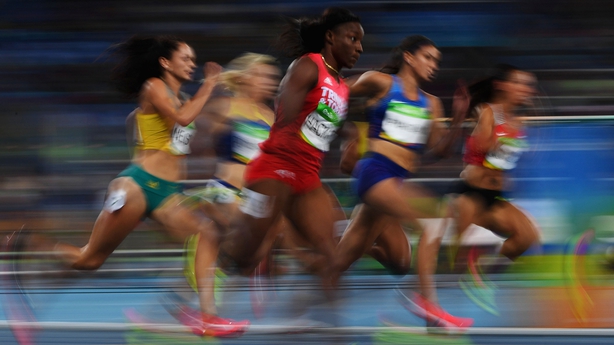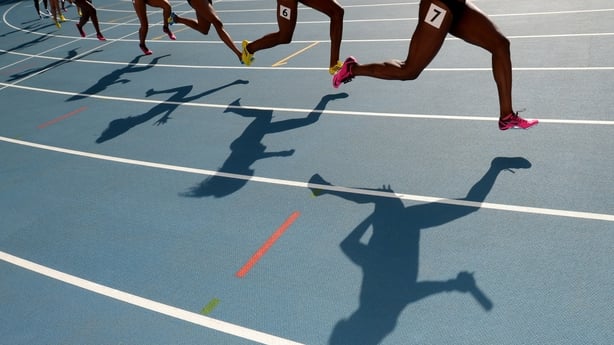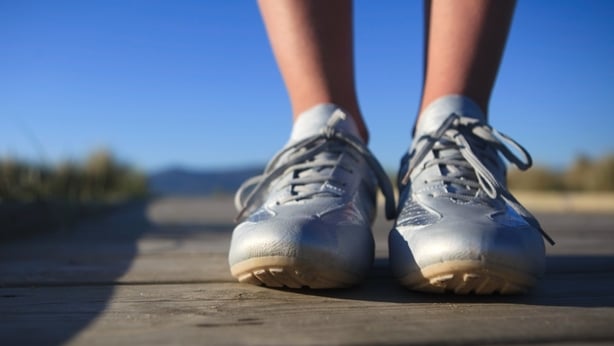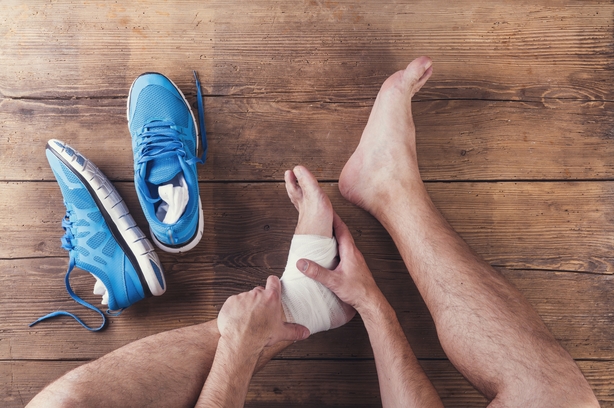Analysis: all you ever wanted to know about Achilles Tendinopathy, a frequent and often persistent complaint which affects both athletes and non-athletes
By Sean McAuliffe, Aspetar Orthopaedic and Sports Spine Centre and Kieran O'Sullivan, University of Limerick
The Achilles tendon is the rope-like structure that connects the calf muscle and your heel bone. Achilles Tendinopathy refers to pain in this region, Previously Achilles Tendinopathy was referred to as Achilles tendinitis or Achilles Tendinosis, but all of the above terms are used to refer to pain in the Achilles tendon. Achilles Tendinopathy is a frequent and often persistent musculoskeletal complaint, which negatively affect physical activity levels and quality of life. Here's what know about this frustrating musculoskeletal complaint.
What causes Achilles Tendinopathy?
It is hard to pinpoint an exact cause for Achilles Tendinopathy. A sudden increase in training load - that is, sudden changes in the distance, intensity, or speed of activity or even running surface - appears to be a common aggravating factor. In addition, adequate recovery or fatigue is also thought to contribute to the development of Tendinopathy.
Although there is a high incidence of Achilles Tendinopathy in athletes, evidence is now emerging highlighting the potential link between metabolic factors (diabetes, obesity, cholesterol) and the use of certain medications (statins, fluoroquinolones) with an increased risk of the development of Tendinopathy.

How is AT diagnosed?
While it is common for people to want to undergo an MRI or ultrasound scan when they have Achilles Tendinopathy, there's no need for scans. MRI or ultrasound scans are effective in allowing visualisation of the tendon structure, which may assist a clinician, but this will not necessarily mean that you will recover quicker. There is very little additional benefit for the patient with imaging in terms of predicting rehabilitation outcomes, as many people will have improvements in symptoms without any change in how their tendon looks on imaging. Simple clinical exam by a healthcare practitioner in addition to your symptom history is often sufficient enough to diagnose Achilles Tendinopathy.
I have been told to rest my Achilles tendon - is this right?
It is commonly assumed that if someone has Achilles Tendinopathy that they should rest their tendon. Although this may seem logical in the acute or initial period if your symptoms are highly irritable, excessive rest in the long term is actually detrimental to resolving symptoms of Achilles Tendinopathy. A tendon's main function is to transfer load and it is important to increase the load tolerance of your Achilles tendon progressively to restore this function. Excessive rest may lead to maintenance of sensitivity or pain in the Achilles tendon and lead to weakness or continued inability of the tendon to tolerate appropriate load during running.
Will dry needling and massage fix my Achilles tendon pain?
Although this treatment may provide pain relief in the short terms, there is not sufficient evidence to suggest that these treatments ill provide long last relief or resolution of symptoms in Achilles Tendinopathy. Potentially, these treatments may be useful in the early stages as pain relief modalities, but should not be the stand-alone treatment.

Is getting an injection to relieve the pain a good idea?
Corticosteroid injections are often administered in Achilles Tendinopathy with the intention of providing pain relief. However, despite the widespread use of corticosteroid injections for Achilles Tendinopathy, the evidence on their usefulness is conflicting. While corticosteroid injections may provide short-term pain relief, the long- term results are disappointing. In fact, worsening of symptoms, and even a higher risk of tendon ruptures after repeated steroid injections have been reported in the scientific literature.
Are there specific exercises I should do?
Strengthening exercises appear to be the most helpful at reducing pain and restoring function in Achilles Tendinopathy. Scientific studies have demonstrated improvements in pain and function if people with Achilles Tendinopathy follow a progressive and structured strengthening program.
Are certain running surfaces harmful for my Achilles tendon?
Again there is no evidence to suggest that one particular surface is harmful. Potentially the most important factor with running surfaces is a suddenly changing from one surface to another rather than the surfaces itself. Theoretically, suddenly changing from running on a treadmill to a beach or to hills may irritate the Achilles tendon and lead to Achilles Tendinopathy.

I have been told I have flat feet so do I need different shoes or insoles?
Although many people may have been told that they are "over pronating" or that "flat feet" us the reason for their Achilles Tendinopathy, there is no substantial evidence to suggest that foot posture is a cause of Achilles Tendinopathy. There is also no optimum running shoe for preventing Achilles Tendinopathy. Whether you use a minimalist shoe or supportive shoe appears to be irrelevant. The main factor is to find a shoe that is comfortable for you and avoiding sudden changes in the types of footwear you use.
I used to run before experiencing Achilles Tendinopathy: when is it safe to run or be active again?
This depends on the irritability of your tendon. Evidence suggests that is OK to run when you are currently experiencing Achilles Tendinopathy provided:
(i) you do not experience a large increase in your Achilles tendon pain (>3/10) during or in the 24-hour period after running (i.e. on a scale of 0-10 with 10 being the worst pain imaginable and 0 being no pain).
(ii) although it is important for runners with Achilles Tendinopathy to ultimately return to running, any running should be complimented with an appropriate strengthening program in order to ensure you have sufficient load tolerance in the tendon for running.
Importantly the decision on returning to activity and sport should not necessarily be based on scan results, but rather on your day-to-day symptoms. Often patients can have a large improvement in symptoms (pain and functional ability) without an associated change in the appearance of the tendon on imaging.

Could I rupture my Achilles tendon if I engage in physical activity?
One of the most common concerns of people with Achilles Tendinopathy is the fear that if they attempt to run or strengthen their Achilles tendon with weights that they may rupture it. However evidence indicates that the vast majority of people who experience an Achilles tendon rupture never had prior pain or symptoms. In fact, it appears by actually increasing the load tolerance of your tendon with a progressive strengthening program you will actually decrease your chance of experiencing an Achilles tendon rupture.
What can I do to try prevent Achilles Tendinopathy?
One of the main aspects of prevention is avoiding large jumps or spikes during your running and training in terms of mileage or speed as discussed previously. It is important to build up your load or running tolerance slowly and progressively. It is also important to pay attention to adequate recovery strategies in terms of ensuring appropriate sleep and nutrition during your training schedule to avoid fatigue, which may affects, the Achilles tendon during running. Finally it may be beneficial to engage in some strength training of the Achilles tendon and calf muscle unit as a preventative exercise as described earlier.

The takeaway message
· Achilles Tendinopathy is frequent, and often persistent musculoskeletal complaint in both athletic and non-athletic individuals.
· Reliance on imaging is rarely required and excessive rest can actually be detrimental to relieving the symptoms associated with Achilles tendinopathy.
· While exercise is often the trigger for onset in athletic populations, exercise in terms of strengthening is also a fundamental treatment approach.
· It is also important to pay attention to adequate recovery strategies in terms of ensuring appropriate sleep and nutrition during your training schedule to avoid fatigue, which may affects, the Achilles tendon during running.
· One of the main aspects of prevention is avoiding large jumps or spikes during your running training in terms of mileage, speed terrain or footwear.
This piece is intended merely as an informative piece so please consult your chartered physiotherapist or healthcare practitioner if you require any additional information or advice in how to deal with your Achilles Tendinopathy.
Sean Mc Auliffe is a Clinical Research Scientist at the Aspetar Orthopaedic and Sports Spine Centre, Doha, Qatar. Dr Kieran O'Sullivan is a Lecturer in Physiotherapy at the School of Allied Health at University of Limerick and Lead Physiotherapist at the Aspetar Orthopaedic and Sports Spine Centre
The views expressed here are those of the author and do not represent or reflect the views of RTÉ


